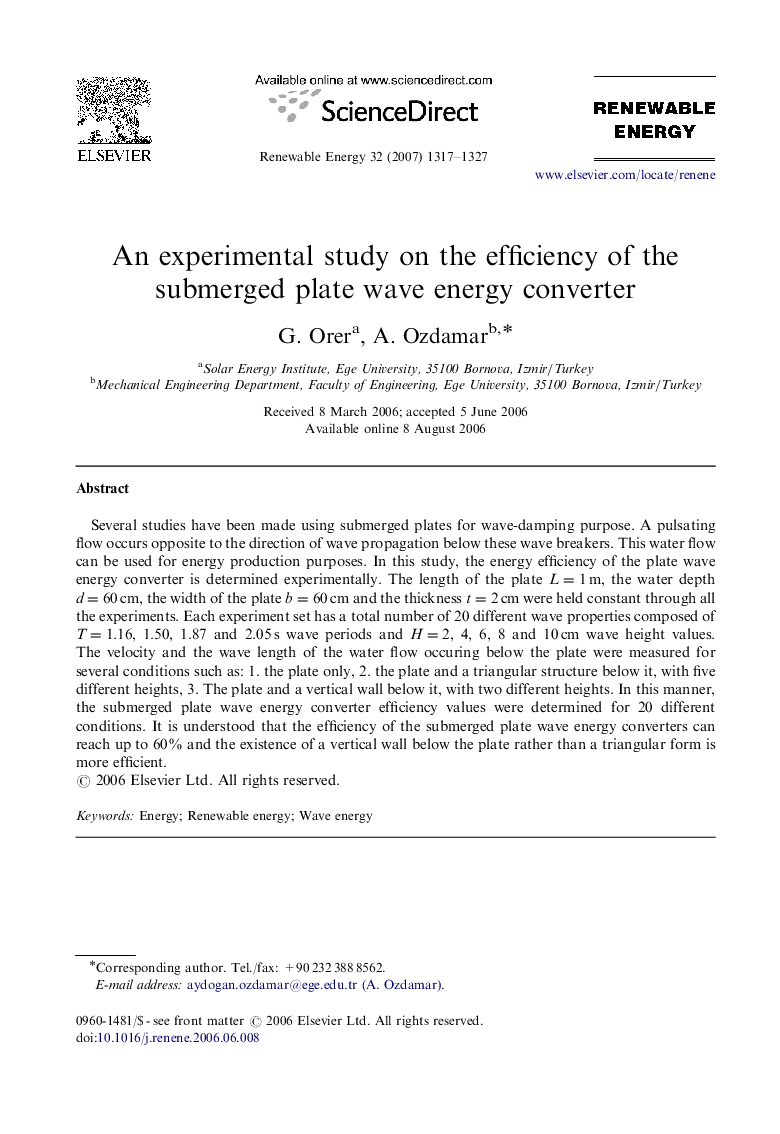| Article ID | Journal | Published Year | Pages | File Type |
|---|---|---|---|---|
| 302949 | Renewable Energy | 2007 | 11 Pages |
Several studies have been made using submerged plates for wave-damping purpose. A pulsating flow occurs opposite to the direction of wave propagation below these wave breakers. This water flow can be used for energy production purposes. In this study, the energy efficiency of the plate wave energy converter is determined experimentally. The length of the plate L=1 m, the water depth d=60 cm, the width of the plate b=60 cm and the thickness t=2 cm were held constant through all the experiments. Each experiment set has a total number of 20 different wave properties composed of T=1.16, 1.50, 1.87 and 2.05 s wave periods and H=2, 4, 6, 8 and 10 cm wave height values. The velocity and the wave length of the water flow occuring below the plate were measured for several conditions such as: 1. the plate only, 2. the plate and a triangular structure below it, with five different heights, 3. The plate and a vertical wall below it, with two different heights. In this manner, the submerged plate wave energy converter efficiency values were determined for 20 different conditions. It is understood that the efficiency of the submerged plate wave energy converters can reach up to 60% and the existence of a vertical wall below the plate rather than a triangular form is more efficient.
